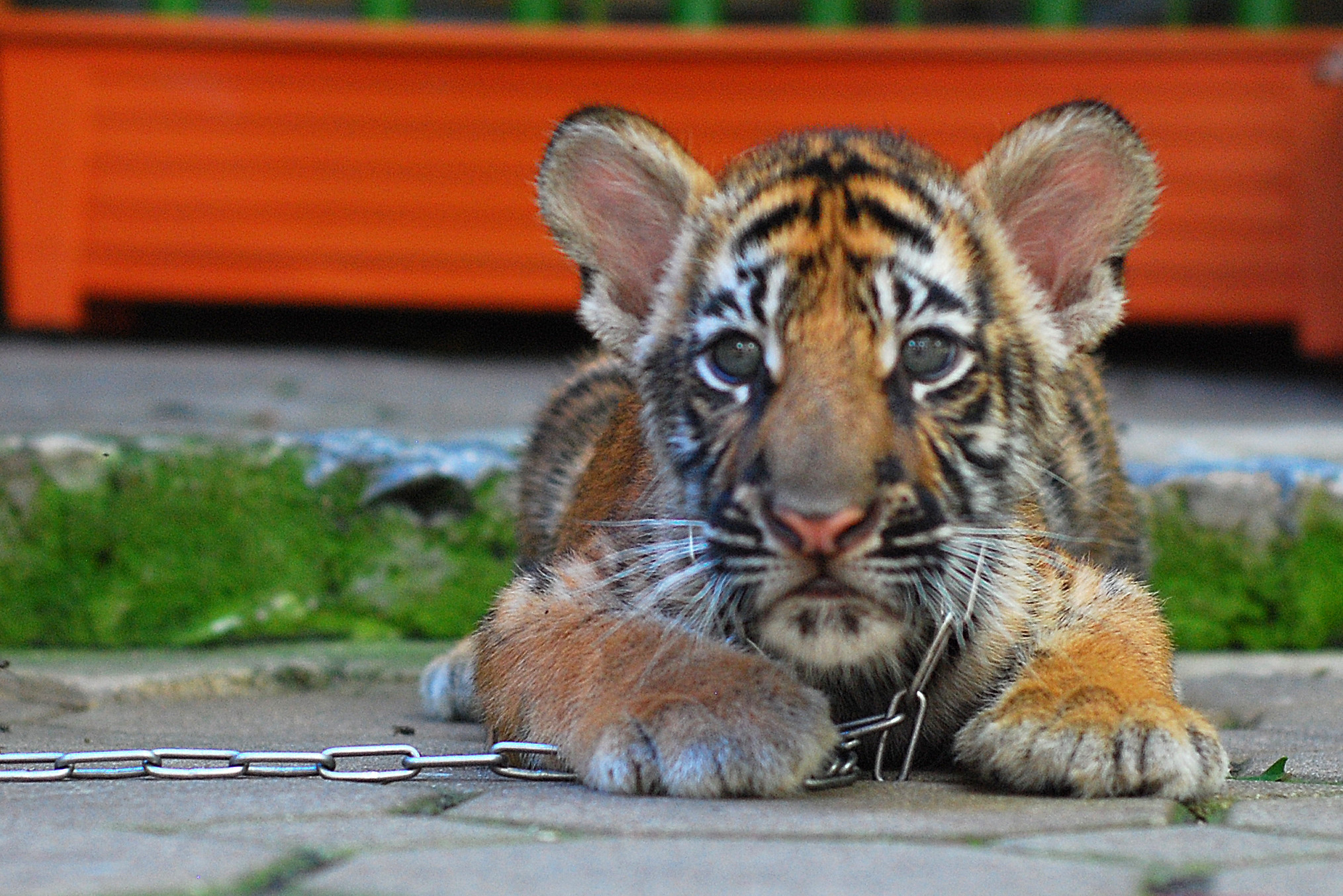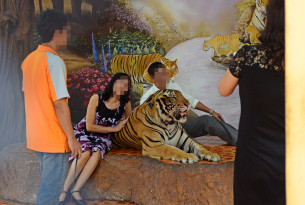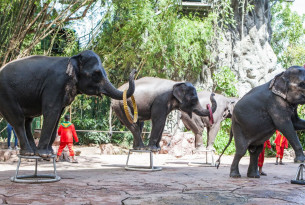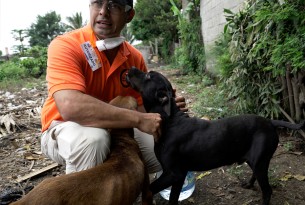
Exposed: true scale of Thailand’s 'tiger selfie' tourism
Report reveals hidden horror behind holiday photos with captive tigers
We've exposed a worrying trend in the horrific abuse suffered by captive tigers at the hands of Thailand’s tiger tourism industry, in a ground-breaking report on the issue.
Our investigative report ‘Tiger selfies exposed: a portrait of Thailand’s tiger entertainment industry’ comes in the wake of the recent scandal at Tiger Temple, and ahead of International Tiger Day on Friday 29th July.
More tigers for a growing market
The document reveals a fast-growing industry with a third more captive tigers in Thailand in just five years. In 2015, and at the beginning of 2016, there were 830 tigers in the country's entertainment venues. This compares to 623 in 2010.
Tiger entertainment venues are increasing in popularity. Tourists want an up-close-and-personal, ‘once in a life-time’ encounter with a wild tiger in captivity.
Besides a worrying trend in the growing numbers of tigers involved, the report lays bare the cruel conditions that these tigers live in, and the abusive methods that make them submissive enough to entertain tourists.
The suffering behind the selfie
The main welfare concerns witnessed by our investigators at these venues were:
- tiger cubs separated from their mothers just two to three weeks after birth
- young cubs presented to tourists and mishandled hundreds of times a day, which can lead to stress and injury
- tigers punished using pain and fear, to stop aggressive, unwanted behaviour. One staff member told our researchers that starvation is used to punish tigers when they make a ‘mistake’
- most tigers were housed in small concrete cages or barren enclosures with limited access to fresh water. 50% of the tigers we observed were in cages with less that 20sqm per animal, a far cry from the 16-32km they would roam in a single night in the wild
- one in ten tigers observed showed behavioural problems, such as repetitive pacing or biting their tails. These behaviours most commonly occur when animals can't cope with stressful environments.
Sriracha Tiger Zoo
Of all of the seventeen major tiger entertainment venues we investigated in Thailand, it was Sriracha Tiger Zoo in Pattaya that has the highest number of tigers in captivity, now that the tigers at the Tiger Temple have been confiscated. This venue is also the one where we observed the poorest conditions. This venue is also the one where our investigators observed the poorest conditions.
Julie Middelkoop, head of our Wildlife – Not Entertainers campaign, said: “It is very worrying that at the time of our research there were 207 more tigers subjected to the misery of being entertainment for tourists than there were five years ago.
“At Sriracha Tiger Zoo our investigator witnessed one tiger that was so thin the hips and ribs were visible.”
Movement for change
Together we can protect the tigers from the cruelty at these tiger entertainment venues. Which is why we're calling on:
- governments to investigate tiger entertainment venues and close down those showing evidence of illegal trade, cruelty or neglect
- TripAdvisor and other travel companies to end the sales and promotion of cruel wildlife attractions
- travellers to stay away from any wildlife tourist entertainment venues that allow direct human-animal interaction, such as hugging and selfies with tigers.
Julie Middelkoop added: “TripAdvisor, the largest travel site in the world, continues to promote and sell tickets to cruel wildlife attractions. Instead of selling tickets to some of the cruellest places like Sriracha Tiger Zoo they could be a part of the solution and help to end the suffering of tigers."






